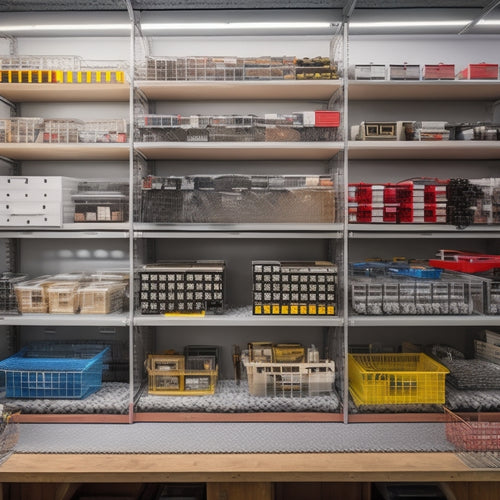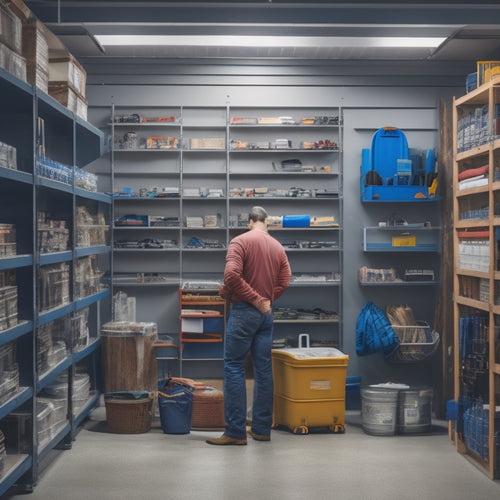
Framing the Picture: Art Materials Demystified
Share
Framing is a nuanced process that demands careful consideration of materials and techniques to safeguard artwork for generations. From matting options to glass types, every element impacts aesthetics and durability. Quality matters, as acid-free materials, UV-filtering glass, and conservation guidelines guarantee artwork remains vibrant and intact. Innovative techniques, like advanced hanging systems and decorative finishes, further enhance the framing craft. With over 400 framing materials available, understanding their unique characteristics is key to creating bespoke pieces that protect and complement artwork. As they explore the intricacies of framing, they'll discover the perfect harmony of form and function.
Key Takeaways
• Over 400 framing materials are available, each with unique characteristics, durability, and aesthetic appeal.
• Acid-free materials, UV-filtering glass, and conservation methods are crucial for preserving artwork and preventing deterioration.
• Matting options, including single and double mats, white core mats, and cotton fiber mats, impact the overall aesthetic of the framed piece.
• Sustainable framing options, such as reclaimed wood and bamboo, offer eco-friendly alternatives for bespoke frames.
• Understanding material properties, like resistance to wear, moisture, and UV light, is essential for choosing the right framing materials.
Framing Essentials Explained
When it comes to picture framing, understanding the essential materials and components is crucial for creating a high-quality, long-lasting frame that showcases and protects the artwork.
Matting options, for instance, can greatly impact the overall aesthetic of the piece. From single mats to double mats, and from white core mats to cotton fiber mats, the choices are vast.
Similarly, glass types, such as convex glass, can add an extra layer of protection and sophistication.
Additionally, hanging hardware, like D-rings, and frame styles, ranging from traditional to modern, can make or break the final product.
Preserving Art for the Ages
Art preservation techniques play a vital role in ensuring that valuable pieces remain intact and visually stunning for generations to come. Improper handling and storage can lead to irreversible damage and deterioration. Conservation methods, such as acid-free materials and de-acidification, help prevent acid migration and burn, which can cause artwork to deteriorate over time.
Historical preservation is also critical, as it involves protecting and conserving artwork created using traditional techniques and materials. By employing these methods, artists and conservators can safeguard their work against the test of time, ensuring that their creations remain vibrant and intact for centuries to come.
Quality Matters in Framing
They grasp that framing isn't just about aesthetics, but also about guaranteeing the long-term preservation and protection of the artwork, which is why quality matters in every aspect of the framing process.
When it comes to material selection, framers must prioritize acid-free materials, UV-filtering glass, and durable frames that can withstand environmental changes.
Adhering to longevity standards, such as those set by the ASTM, guarantees that the artwork remains protected for generations to come.
By choosing high-quality materials and following strict conservation guidelines, framers can ensure that the artwork remains in its original state, free from deterioration or damage.
This attention to detail is what sets exceptional framers apart, providing peace of mind for artists, collectors, and art enthusiasts alike.
Innovative Framing Techniques
Framers who prioritize quality and longevity in their work often turn to innovative techniques to stay ahead of the curve, pushing the boundaries of traditional framing methods. One such technique is the use of advanced hanging systems, such as the Arakawa Hanging System, which provides a secure and adjustable way to display artwork.
Another area of innovation is in decorative finishes, where framers can experiment with unique textures and colors to create truly bespoke pieces. By embracing these cutting-edge techniques, framers can elevate their craft and produce stunning, one-of-a-kind frames that showcase their clients' artwork in the best possible light.
The Art of Framing Materials
Over 400 framing materials are currently available, each with its unique characteristics, advantages, and limitations, allowing picture framers to select the perfect medium to complement and enhance their clients' artwork.
When it comes to material durability, framers consider factors such as resistance to wear and tear, moisture, and UV light.
Sustainable framing is also a growing concern, with eco-friendly options like reclaimed wood, bamboo, and recycled materials gaining popularity.
By understanding the properties and benefits of each material, framers can create bespoke frames that not only protect the artwork but also contribute to its aesthetic appeal.
Frequently Asked Questions
What Is the Purpose of a Certificate of Authenticity in Picture Framing?
Like a beacon of authenticity, a certificate of authenticity shines bright, verifying a work's legitimacy, thereby bolstering its art provenance and increasing collector value, as it serves as tangible proof of an artwork's origin and ownership history.
Can I Use a Hot Glue Gun for Framing Delicate Artwork?
She avoids using hot glue guns for delicate artwork, opting instead for acid-free adhesives and gentle bonding techniques to guarantee a secure, long-lasting hold without compromising the artwork's integrity or value.
How Do I Prevent Mold Growth on My Framed Artwork in Humid Climates?
She prevents mold growth on framed artwork in humid climates by maintaining climate control, using acid-free materials, and ensuring a tight frame sealing to prevent moisture intrusion, thereby protecting her delicate pieces.
What Are the Benefits of Using Chamois in Picture Framing?
Like a gentle summer breeze, chamois softly whispers away dust and debris, its soft brushstrokes and gentle wiping motion protecting artwork from scratches, ensuring a pristine finish that radiates elegance and sophistication.
Can I Frame My Artwork With a Non-Reflective Glass or Acrylic Alternative?
She can opt for UV-filtering acrylic or glass alternatives, such as museum glass or acrylic, which offer superior UV protection and glare reduction, ensuring her artwork remains preserved and visible without reflections.
Related Posts
-

10 Essential Steps for Small Parts Bin Storage
To optimize your small parts bin storage, start by defining your storage needs and goals, considering factors like av...
-

Best Screw Storage Bins for Organizing Your Toolbox
You need a reliable screw storage system to maximize your productivity and efficiency, and that's exactly what the ri...
-

Building Garage Shelves in 7 Easy Steps
You're about to convert your garage into a highly functional storage space by building custom shelves in just 7 easy ...


